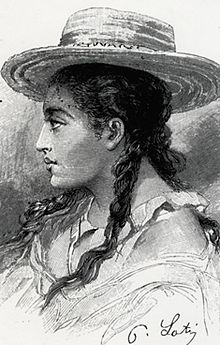
Pierre Loti was a French naval officer and novelist, known for his exotic novels and short stories.

Bora Bora is an island group in the Leeward Islands in the South Pacific. The Leeward Islands comprise the western part of the Society Islands of French Polynesia, which is an overseas collectivity of the French Republic in the Pacific Ocean. Bora Bora has a total land area of 30.55 km2 (12 sq mi). The main island, located about 230 kilometres northwest of Papeete, is surrounded by a lagoon and a barrier reef. In the center of the island are the remnants of an extinct volcano, rising to two peaks, Mount Pahia and Mount Otemanu; the highest point is at 727 m (2,385 ft). Bora Bora is part of the Commune of Bora-Bora, which also includes the atoll of Tūpai. The main languages spoken in Bora Bora are Tahitian and French. However, due to the high tourist population, many natives of Bora Bora have learned to speak English.

Moʻorea, also spelled Moorea, is a volcanic island in French Polynesia. It is one of the Windward Islands, a group that is part of the Society Islands, 17 kilometres (11 mi) northwest of Tahiti. The name comes from the Tahitian word Moʻoreʻa, meaning "yellow lizard": Moʻo = lizard; Reʻa = yellow. An older name for the island is ʻAimeho, sometimes spelled ʻAimeo or ʻEimeo. Early Western colonists and voyagers also referred to Moʻorea as York Island or Santo Domingo.
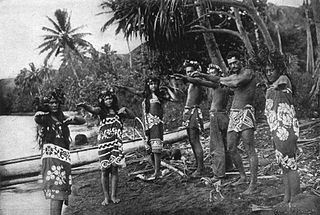
The Marquesas Islands were colonized by seafaring Polynesians as early as 300 AD, thought to originate from Tonga and the Samoan Islands. The dense population was concentrated in the narrow valleys and consisted of warring tribes.
Lesley Blanch, MBE, FRSL was a British writer, historian and traveller. She is best known for The Wilder Shores of Love, about Isabel Burton, Jane Digby el-Mezrab, Aimée du Buc de Rivéry, and Isabelle Eberhardt.
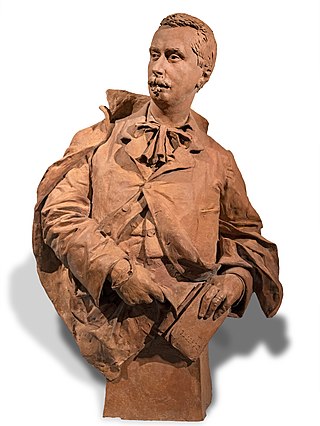
Émile Pouvillon was a French novelist.
Célestine Hitiura Vaite is a French Polynesian writer.
Ramuntcho (1897) is a novel by French author Pierre Loti. It is a love and adventure story about contraband runners in the Basque province of France. It is one of Loti's most popular stories—"love, loss and faith remain eternal themes"—with four French film adaptations. It was first published in 5 parts, from 15 December 1896 to 15 February 1897, in the Revue de Paris. Calmann-Lévy published the novel in two parts on 10 March 1897. A dramatized version was staged in Paris in 1910, with incidental music by Gabriel Pierné.
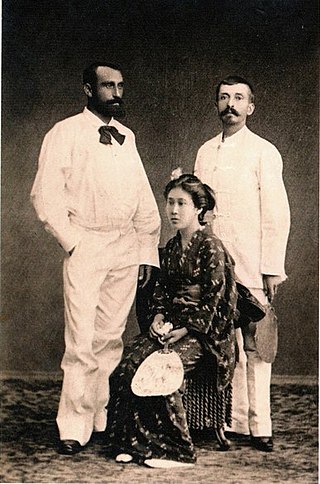
My Brother Yves is a semi-autobiographical novel by French author Pierre Loti. It describes the friendship between French naval officer Pierre Loti and a hard drinking Breton sailor Yves Kermadec during the 1870s and 80s. It was probably Loti's best-known book, and its descriptions of Breton seafaring life, on board ship and on shore, set the tone for his later acclaimed work An Iceland Fisherman (1886).

Aziyadé is a novel by French author Pierre Loti. Originally published anonymously, it was his first book, and along with Le Mariage de Loti, would introduce the author to the French public and quickly propel him to fame; because of this, his anonymous persona did not last long.

The Tahitians are the Indigenous Polynesian people of Tahiti and thirteen other Society Islands in French Polynesia. The numbers may also include the modern population in these islands of mixed Polynesian and French ancestry. Indigenous Tahitians are one of the largest Polynesian ethnic groups, behind the Māori, Samoans and Hawaiians.

Hawaiʻi–Tahiti relations refers to the historical relationship between the independent Kingdom of Hawaiʻi and the Kingdom of Tahiti. Relations included one treaty, proposed marriage alliances and exchanges of trade and diplomatic representatives from the early 1800s to 1880.
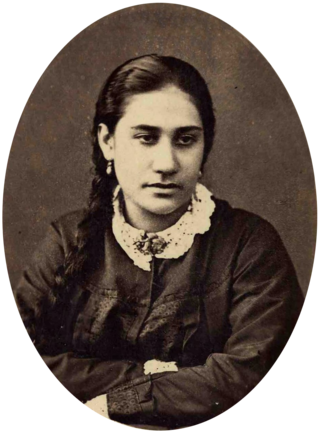
Johanna Marau Taʻaroa a Tepau Salmon was the consort of King Pōmare V who ruled from 1877 to 1880 and was the last queen consort of the Kingdom of Tahiti. Her name means "Much-unique-cleansing-the-splash" in the Tahitian language.

Tamaeva V or Temaeva V, formally Heimataura Tamatoa Tamaeva V, was the Arii vahine no Rimatara or queen of the island kingdom of Rimatara, an island within the larger Austral Islands archipelago, from 1892 to 1901. She served as regent for her predecessor Queen Tamaeva IV.

The Franco-Tahitian War or French–Tahitian War (1844–1847) was a conflict between the Kingdom of France and the Kingdom of Tahiti and its allies in the South Pacific archipelago of the Society Islands in modern-day French Polynesia.

Fatata te Miti is an 1892 oil painting by French artist Paul Gauguin, located in the National Gallery of Art, in Washington, DC.

Merahi metua no Tehamana is an 1893 painting by the French artist Paul Gauguin, currently in the collection of the Art Institute of Chicago. The painting is a portrait of Paul Gauguin's wife Teha'amana during his first visit to Tahiti in 1891–1893. This marriage has always provoked controversy because it was arranged and completed in the course of a single afternoon and Gauguin claimed Teha'amana was just thirteen years old at the time.

The Tahitian Dog is an extinct breed of dog from Tahiti and the Society Islands. Similar to other strains of Polynesian dogs, it was introduced to the Society Islands and Tahiti by the ancestors of the Tahitian (Mā’ohi) people during their migrations to Polynesia.

L'île du rêve is a 1898 French opera set in Polynesia. It was the first opera by Reynaldo Hahn. The idylle polynésienne in three acts has a libretto by André Alexandre and Georges Hartmann, which was adapted from Pierre Loti's semi-autobiographical 1880 novel Rarahu or Le Mariage de Loti set in Tahiti. It premiered on 23 March 1898 at the Opéra-Comique in Paris.

The annexation of the Leeward Islands or the Leewards War was a series of diplomatic and armed conflicts between the French Third Republic and the native kingdoms of Raiatea-Tahaa, Huahine and Bora Bora, which resulted in the conquest of the Leeward Islands, in the South Pacific archipelago of the Society Islands in modern-day French Polynesia.
